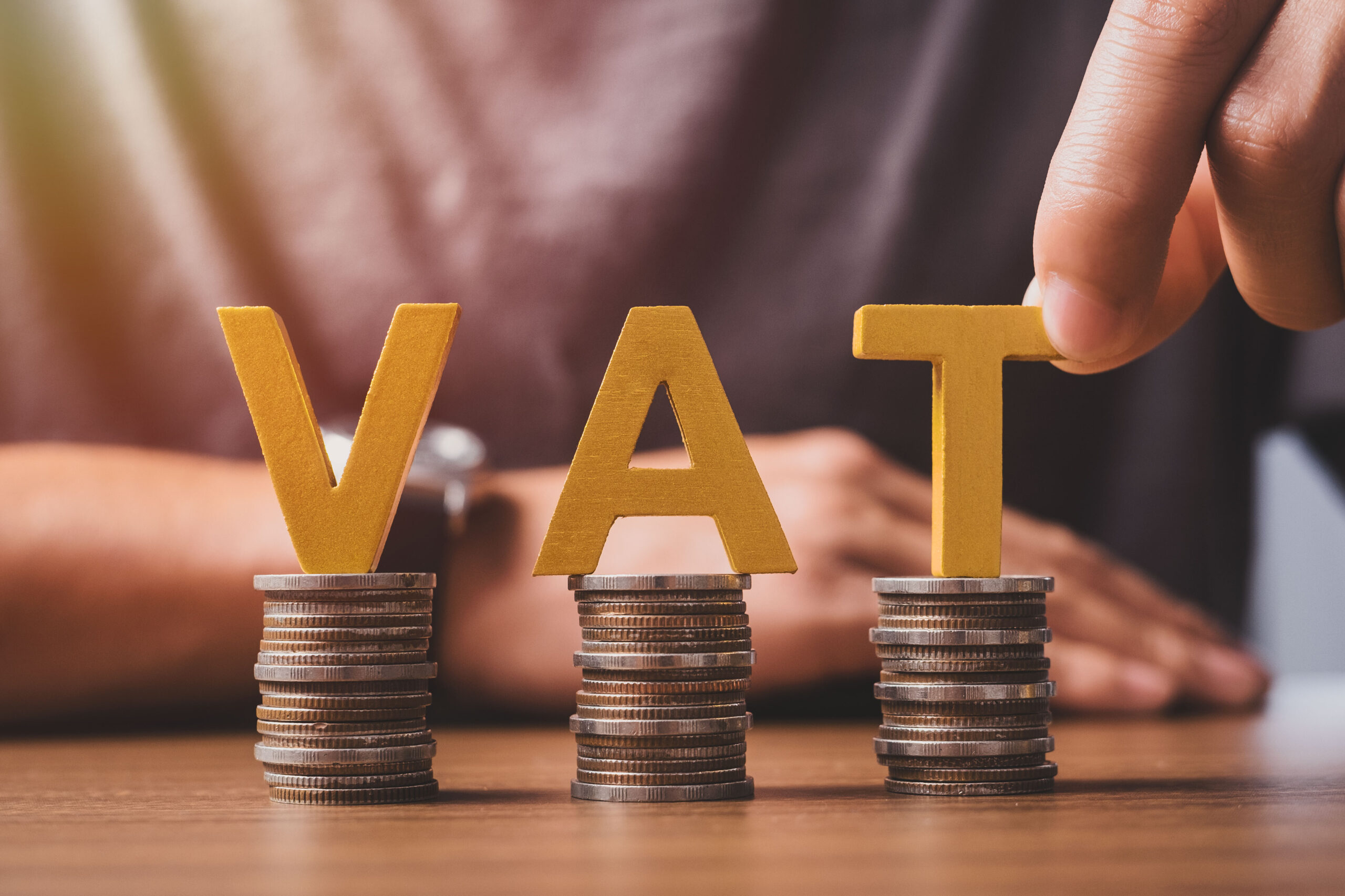How to find a company VAT number?

Value Added Tax (VAT) is a consumption tax levied on goods and services at each stage of production or distribution. A VAT number is a unique identifier assigned to businesses that are registered for VAT. If you’re dealing with a company, especially in the UK or EU, you might need to find their VAT number for invoicing, compliance, or verification purposes.
Knowing how to find and validate a VAT number is crucial for ensuring that transactions are legitimate and that you are compliant with tax regulations. This blog will guide you through various methods to find a company’s VAT number, including checking invoices, using online tools, and contacting tax authorities.
We’ll also cover how to validate a VAT number to ensure its authenticity. Whether you’re a business owner, accountant, or just someone needing this information, this blog will provide you with simple and effective steps to find and verify VAT numbers.
What is VAT?
Value Added Tax (VAT) is a tax imposed on most goods and services in the United Kingdom. It is a consumption tax that businesses add to the price of their products or services at each stage of production and distribution. Essentially, VAT is collected by businesses on behalf of the government and is ultimately paid by the end consumer. For example, when you buy a product, the price you pay includes VAT, which the seller then passes on to the tax authorities.
VAT is crucial for generating government revenue and ensuring fair taxation across different sectors. Businesses with a certain level of turnover are required to register for VAT and obtain a unique VAT number. This number is used for tax reporting and compliance purposes. Understanding VAT is essential for both consumers and businesses to ensure proper financial and tax practices.
What is a VAT Registration Number?
A VAT registration number is a unique identification number assigned to businesses that are registered for Value Added Tax (VAT). This number is crucial for tax purposes and is used to identify the business in all VAT-related transactions. When a business reaches a certain turnover threshold, it must register for VAT, and in return, it receives this unique number.
The VAT registration number is used on invoices, receipts, and other official documents to indicate that the business is authorised to collect VAT on behalf of the government. It helps ensure transparency and compliance with tax regulations. If you’re dealing with a business, knowing their VAT registration number can help you verify their legitimacy and ensure that your transactions are properly documented for tax purposes.
Importance of VAT for Businesses
A VAT number is more than just a string of digits; it plays a crucial role in the functioning and compliance of businesses. Here are five key reasons why VAT numbers are important:
- Legal Compliance: Businesses that meet the VAT threshold are legally required to register for VAT and obtain a VAT number. This ensures that they are compliant with tax laws and regulations. Failure to do so can result in penalties and legal issues.
- Tax Collection and Remittance: A VAT number indicates that business is registered for VAT and is eligible to.. allows businesses to collect VAT from customers on behalf of the government. This tax is then remitted to the tax authorities. Proper VAT collection and remittance are essential for maintaining good standing with tax authorities and avoiding fines.
- Input Tax Credit: Businesses registered for VAT can claim input tax credits on the VAT paid for goods and services purchased for business use. This helps reduce the overall tax burden and improves cash flow, making it easier to manage finances.
- Credibility and Trust: Displaying a VAT number on invoices and official documents enhances a business’s credibility. It shows that the business is registered and compliant with tax regulations, which can build trust with customers, suppliers, and partners.
- Cross-Border Transactions: For businesses involved in international trade, a VAT number is essential. It facilitates smoother cross-border transactions within the EU and other regions, ensuring that VAT is correctly applied and accounted for.
Understanding the importance of VAT numbers helps businesses operate legally, efficiently, and with greater financial control.
When do I Need to Use VAT Number?
A VAT number is essential for various business activities. Here are five key instances when you need to use it:
- Issuing invoices to customers.
- Filing VAT returns with tax authorities.
- Claiming VAT refunds on business expenses.
- Importing or exporting goods within the EU.
- Verifying the VAT status of suppliers and clients.
Understanding these scenarios ensures compliance and smooth operations.
Format of VAT Numbers Across the EU
A VAT number is a unique identifier assigned to businesses that are registered for Value Added Tax (VAT) in the European Union (EU). The format of VAT numbers varies across different countries within the EU, but they all follow a specific pattern. Here’s a table that outlines the format of VAT numbers for various EU countries:
| Country | Country Code | Format | Characters |
| Austria | AT | ATU12345678 | 9 |
| Belgium | BE | BE0123456789 | 10 |
| Bulgaria | BG | BG123456789 | 9 or 10 |
| Croatia | HR | HR12345678901 | 11 |
| Cyprus | CY | CY12345678X | 9 |
| Czech Republic | CZ | CZ12345678 | 8 or 9 |
| Denmark | DK | DK12345678 | 8 |
| Estonia | EE | EE123456789 | 9 |
| Finland | FI | FI12345678 | 8 |
| France | FR | FR12345678901 | 11 |
| Germany | DE | DE123456789 | 9 |
| Greece | EL | EL123456789 | 9 |
| Hungary | HU | HU12345678 | 8 |
| Ireland | IE | IE1234567X | 8 |
| Italy | IT | IT12345678901 | 11 |
| Latvia | LV | LV12345678901 | 11 |
| Lithuania | LT | LT123456789 | 9 or 12 |
| Luxembourg | LU | LU12345678 | 8 |
| Malta | MT | MT12345678 | 8 |
| Netherlands | NL | NL123456789B01 | 12 |
| Poland | PL | PL1234567890 | 10 |
| Portugal | PT | PT123456789 | 9 |
| Romania | RO | RO12345678 | 2-10 |
| Slovakia | SK | SK1234567890 | 10 |
| Slovenia | SI | SI12345678 | 8 |
| Spain | ES | ES12345678X | 9 |
| Sweden | SE | SE123456789701 | 12 |
How to Find a Company VAT Number
Finding a company’s VAT number can be essential for various business transactions and compliance purposes. Here are some straightforward methods to help you locate a company’s VAT number:
- Check Invoices and Official Documents: One of the simplest ways to find a company’s VAT number is by looking at their invoices or official documents. Businesses that are VAT-registered are required to include their VAT number on all invoices, receipts, and other official paperwork. If you have previously done business with the company, check any past invoices or receipts you have received from them.
- Use Online VAT Lookup Tools: Several online tools and databases can help you find a company’s VAT number. Websites like VIES (VAT Information Exchange System) allow you to search for VAT numbers of businesses within the European Union. For UK companies, you can use the HMRC’s online VAT number checker. Simply enter the company’s name or other relevant details, and the tool will provide you with the VAT number if it is available.
- Contact the Company Directly: If you cannot find the VAT number through invoices or online tools, consider contacting the company directly. Reach out to their customer service or accounting department and request their VAT number. Most businesses will provide this information upon request, especially if you explain the reason for your inquiry. The HMRC VAT Helpline number is 0300 200 3700. They are open Monday to Friday 8 AM to 6PM.
- Check the Company’s Website: Many businesses list their VAT number on their official website, often in the footer, on the “About Us” page, or within their terms and conditions. A quick search of the company’s website might yield the information you need.
- Contact HMRC for UK VAT Numbers: If you are looking for a VAT number for a UK-based company and other methods have not worked, you can contact HMRC (HM Revenue and Customs). They can assist in finding a VAT number, although they may require specific information about the company to process your request.
- Use Business Directories and Databases: Some business directories and databases, such as Companies House in the UK, provide VAT numbers as part of their company profiles. These directories can be a valuable resource for finding VAT numbers, especially for larger or well-established businesses.
By using these methods, you can efficiently find a company’s VAT number, ensuring that your transactions are compliant and properly documented.
Validating a VAT Number
Validating a VAT number is an essential step to ensure that the business you are dealing with is legitimately registered for VAT. This process helps prevent fraud and ensures compliance with tax regulations. Here’s a straightforward guide to validating a VAT number:
Why Validate a VAT Number?
Validating a VAT number is crucial for several reasons:
- Compliance: Ensures that you are dealing with a legally registered business.
- Avoiding Fraud: Helps prevent fraudulent activities by verifying the authenticity of the VAT number.
- Accurate Invoicing: Ensures that VAT is correctly applied and accounted for in transactions.
How to Validate a VAT Number Using VIES
The VAT Information Exchange System (VIES) is an online tool provided by the European Commission that allows you to check the validity of a VAT number issued by any EU member state. Here’s how to use it:
- Access the VIES Website: Go to the VIES website: VIES VAT Number Validation
- Select the Country: Choose the country where the business is registered from the dropdown menu.
- Enter the VAT Number: Input the VAT number you want to validate. Ensure there are no spaces or special characters.
- Submit the Request: Click on the “Verify” button to submit your request.
- Check the Results: The system will display whether the VAT number is valid or not. If valid, it will also show the name and address of the business.
Recording Proof of VAT Number Validation
It’s important to keep a record of your validation checks for future reference and compliance purposes. Here’s how to do it:
- Take a Screenshot: Capture a screenshot of the validation result page.
- Save the Information: Save the screenshot and any related information in your records.
- Document the Date: Note the date and time of the validation check.
Common Issues and Solutions
- Invalid VAT Number: Double-check the number for any errors. If it’s still invalid, contact the business for clarification.
- System Errors: If VIES is temporarily unavailable, try later or use alternative methods like contacting the national tax authority.
By following these steps, you can easily validate a VAT number and ensure that your business transactions are secure and compliant.
How to Reclaim VAT?
Reclaiming VAT can help businesses reduce their tax burden by recovering the VAT paid on business-related expenses. Here’s a guide to reclaiming VAT:
- Ensure VAT Registration: Only VAT-registered businesses can reclaim VAT. Make sure your business is registered for VAT with the relevant tax authority.
- Keep Accurate Records: Maintain detailed records of all VAT invoices and receipts. These documents are essential for proving the VAT you’ve paid.
- Submit VAT Returns: Regularly file VAT returns, usually quarterly, through your tax authority’s online portal. Include all eligible VAT expenses.
- Claim Input Tax: On your VAT return, list the VAT paid on business purchases (input tax). This amount can be deducted from the VAT you’ve collected from sales (output tax).
- Follow Deadlines: Adhere to submission deadlines to avoid penalties and ensure timely refunds.
By following these steps, you can efficiently reclaim VAT and improve your business’s cash flow.
VAT Software for Accountants to Simplify VAT Returns
Managing VAT returns can be complex, but our VAT MTD software for accountants makes an easy process with direct submissions to HMRC. Designed to streamline your workflow, our software ensures accuracy and compliance, reducing the risk of errors and penalties. With features like automated calculations, real-time updates, and easy-to-use interfaces, you can focus more on your clients and less on paperwork.
We offer a free trial of software, also you can book a demo, to explore all the benefits and functionalities of our software. Experience how it can transform your VAT return process, making it more efficient and hassle-free. Try Nomi today and see the difference it can make for your accounting practice.
Want to find out more?
Book a free 30-day trial or talk to one of our advisor and see how our accounting software can help you manage staff, increase profitability and take your practice to the next level.

Be Audit-Ready: What HMRC Wants to See in Your Corporation Tax Records
Keeping accurate financial records has always been an important part of running a compliant limited...
Read More

Onboarding That Wins Clients: A Smarter Start For Accountants
Client onboarding is about more than just ticking admin boxes. A smooth, professional client onboarding...
Read More

Making Tax Digital: A Self-Employed Guide to ITSA Changes’?
If you’re self-employed, a sole trader or run a small business, you’ve probably heard about...
Read More

Introducing OpenTax for Nomi’s Accountants
Managing client tax submissions and payments can be a time-consuming challenge for accountants. OpenTax simplifies...
Read More